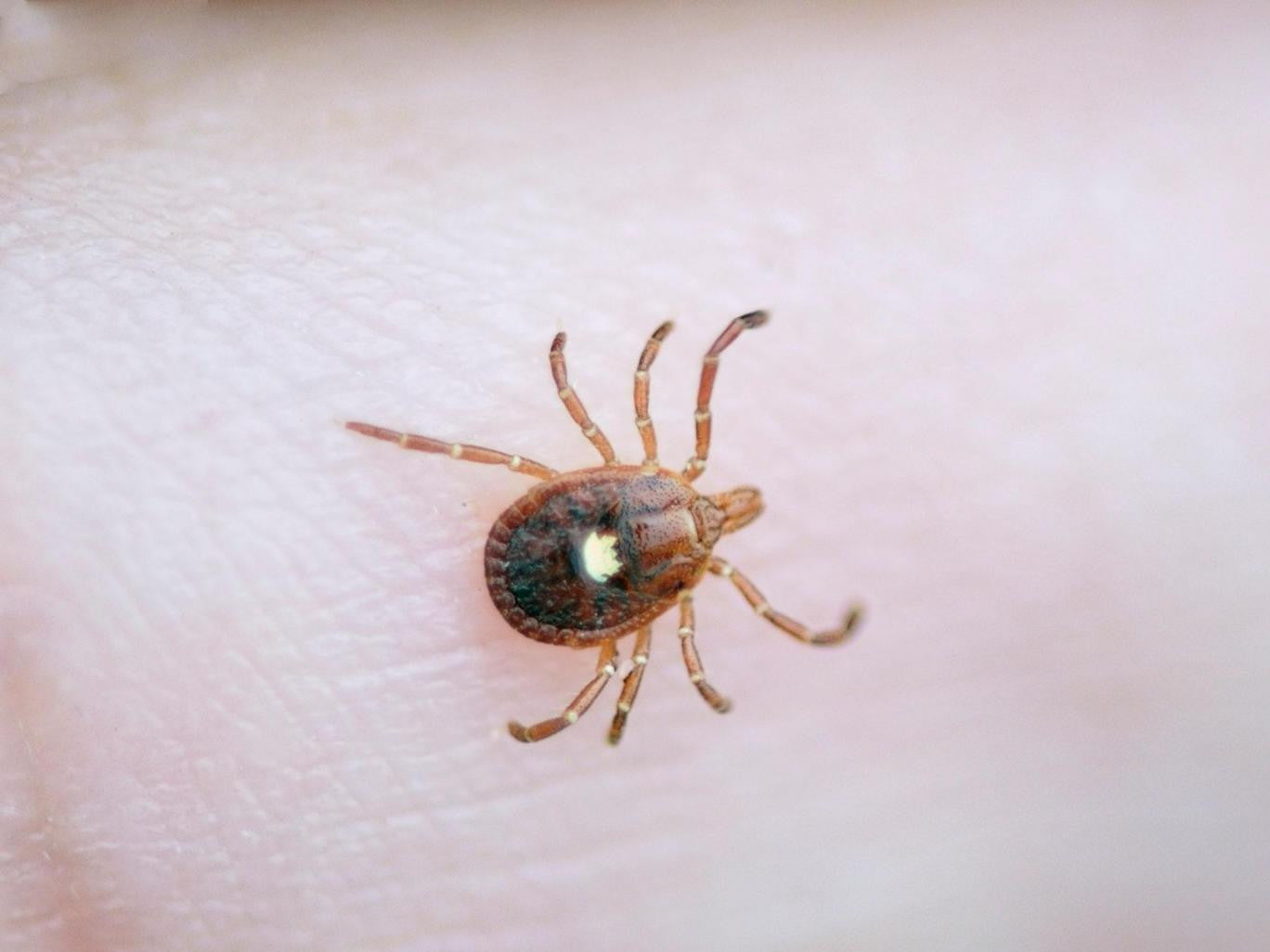
What you need to know about Ticks and Lymes disease!
Ixodes scapularis - The Common Tick

Whether you are an advocate of global warming or climate change, global temperatures are on the rise. As a result of this rise in temperature, ticks are becoming more widespread, after all, they prefer warmer climes and are most active from mid Summer to mid Autumn.
So why do you need to know anything about ticks?
In themselves, ticks are more or less harmless. It is the bacteria, diseases and viruses that they can carry, that makes them dangerous or even deadly. When a tick "bites" it begins by burying it mandible into the flesh. During this process the tick will release an anti coagulant, so the cut it creates does not heal, whilst they remain attached. The tick will then bury its hypostome below the dermis layer where it begins to feed on blood. As it feeds, its body engorges with blood and can swell up to 10 times its size! Once it has had its fill, it will disengage by its self. Depending on what type of tick it is, it may have to repeat this feeding process up to 7 times, in order to complete its life cycle. This means a tick can bite up to 7 different (or the same) hosts, during its life.

As stated previously, the most dangerous aspect of being bitten is the chance of contacting one of several diseases that ticks are known to carry. There are approximately 12 diseases associated with ticks, including meningitis and Lymes disease. As they feed on the blood, they can transfer diseases, viruses and bacteria directly into the bloodstream, potentially causing a myriad of problems. The quicker a tick is removed, the lesser the chance of any transference. Once removed, the area should be treated with an antiseptic, again to minimise the chances of infection/contamination.
One of the most dangerous aspect of being bitten by a tick is being infected with Lymes disease. If you have been bitten by a tick, don't panic! If removed quickly, within a few hours, the chances of catching anything are greatly minimised. This is why it should be a matter of course to check yourself daily, when in tick supporting environments. Furthermore, all ticks do not carry Lymes disease! Just because you get bitten, does not mean you will catch anything! Even in areas where Lymes disease is prevalent, it is usually the case that only 50% of the tick population will be infected.
How to remove a tick
Do not burn it off with a match or lighter!
Do not smother the tick with vaseline, chemicals or petroleum.
Do make sure to keep the tick in tact as you remove it. If done incorrectly, the tick can be torn in half, leaving it "head" still embeded underneath the skin. This is a very dangerous situation as essentially, this leaves you with a permanently open wound. It can heal over, with the mandibles still embeded, which again, can cause a whole plethora of problems in itself.
Doing any of these can cause the tick to regurgitate its stomach contents back into the host's blood stream. The chances of transference are massively amplified under these circumstances and should be avoided at all cost.
The best way to remove a tick is to do it manually. Tick removal cards are now widely available. Using a tick card maximises the chances of removing a tick whilst still keeping it intact.


(tickcard.co.uk)
If you do not have a tick card, it is possible to use the same procedure with cotton thread. Simply make a small loop with the thread. Place this loop around the "neck" of the tick. Make sure the loop is tightened around the tick, as close to the human skin as possible (you don't want the loop to be around the tick's body!). Once sufficiently tight, begin by slowly pulling the tick upwards, away from the skin, at a 90 degree angle. Depending on how deeply the tick is embeded, it's grip should begin to loosen within a few seconds or minutes. It should then be possible to pull the tick out, intact. The puncture area should then be disinfected to minimise chances of infection. Please note, if a tick has been embeded for a long time, the process of pulling it out can take up to 5-10 minutes! From personal experience, this can be a tortuous, mildly painful and kind of disturbing process, especially if your little tickie friend does not want let go of you and has chosen a particularly sensitive spot!
Once the tick is removed, dispose of it safely. We would suggest you place it into a folded sheet of kitchen roll and crush it under foot and then flush away or burn. Try to avoid handling it with your bare hands as it could still potentially transfer bacteria and diseases. If you are genuinely worried about being infected, put the removed tick into an air tight container and freeze it. This way, if any problems become evident, it will be possible to have the tick analysed to see if it was carrying anything dangerous. In fact, it is possible to buy home testing kits to check whether a tick is carrying Lyme's disease.
Other indicators of a problem/infection.
The most obvious symptom of Lymes disease is a rash. The skin reddens and the rash forms concentric circles around the bite mark. This usually takes place within a few days of being bitten. However, it is still possible to be infected with Lymes disease without a rash ever appearing, or in fact without ever knowing you have been bitten.


This red rash can vary in size and shape so please be particularly vigilant. This type of rash is common to approximately 80% of infected bite victims and usually appears within 3-30 days of being bitten.
Later stage signs of Lymes disease infection include facial palsy (a drooping of the facial features) and swollen joints, in particular the knees. Others symptoms may include dizziness, headaches, heart palpitations, arthritis, inflammation of the brain and spinal cord, numbness in the limbs, problems with short term memory.
As with tick removal, the earlier you receive treatment, the better the chances of being fully cured! Lymes disease needs immediate treatment! When left unchecked for more than a few weeks, it becomes much harder to cure and in fact, becomes almost impossible to cure within a couple of months. However, if caught early enough, it can be treated! Again, vigilance is key. Early stage cure simply involves a course of common antibiotics.
Even if it is not caught early, in most cases, all symptoms can be brought under control, with the correct medications/treatments. Please bare in mind, Lymes is a serious disease and should be treated as soon as possible.
As mentioned above, ticks can also carry meningitis as well as ; Rocky Mountain Spotted Fever, Tularemia, Relapsing Fever, Ehrlichiosis, Colorado Tick Fever, Babesiosis and more.
How to minimise chances of being bitten?:
Ticks are opportunist predators. They wait on low lying bracken, leaves, grasses and shrubs. When they detect movement they rear up, with their front legs in the air and attach themselves to the host as it passes them. Ticks can not jump or fly so rely on their victims brushing against them. Ticks become more alert when in the presence of body heat, smell and breath. Once they have climbed on to the host, it takes them between 10 minutes and 2 hours to prepare to feed. This will usually involve the tick trying to find the right spot to bite down. Most will prefer areas of soft, thin skin such as the groin, armpits, back of the knees, behind the ears and on the wrists (always check under your watch strap). Once they bite, they flatten themselves against the skin so may not be that obvious to detect by touch.
It is possible to buy several repellent sprays, to protect yourself against tick bites. Unfortunately, the best repellents contain DEET. DEET is a fairly toxic chemical compound that acts as a repellent against biting insects including: mosquitoes, jiggers, ticks, gnats and fleas. DEET works by blocking smell and temperature receptors in the insects, essentailly masking the human scent from potential pests. DEET does not directly kill these insects although often, it is mixed with pesticides, in which case it can kill insects. A high concentration of DEET (c. 80%) will provide approximately 8 hours of protection. Whereas lower concentrations (c.30%) will provide approximately 2-3 hours of protection, so will require more reapplications.
For more details on how to protect yourself from and deal with tick bites, please click on the following link:
http://www.nhs.uk/Conditions/Lyme-disease/Pages/Introduction.aspx


